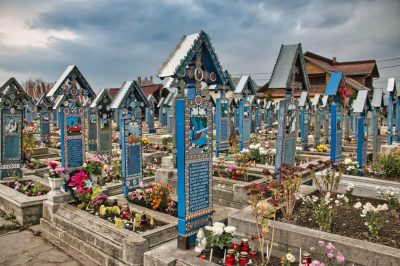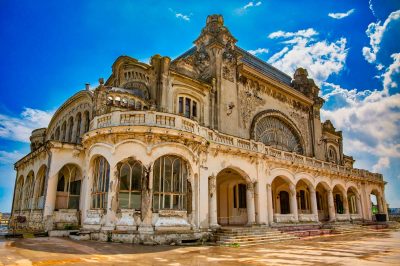The water has accumulated in huge puddles in Sarmizegetusa Regia. The wind whistles coldly between the trees here in the hills south of Hunedoara in Romania. The leaves of the trees have already turned completely red. We drive past small villages. Next to the road runs a river, which sometimes ripples quietly and a few meters further becomes a raging torrent. Dogs keep running out of the yards of the houses and chase our car. I am glad that I am sitting inside. The area around the Romanian Stonehenge is deeply rural. Again and again we drive past pigsties and flocks of sheep. The shepherds greet us friendly. The pigs grunt happily about the rare visit.



Odyssey through the forest
After a drive of only about 40 kilometers, we finally arrive at the parking lot for the excavation site of Sarmizegetusa Regia after only a little less than one and a half hours from Hunedoara. For about 20 minutes already no other vehicle crossed our paths in this forgotten place. When we arrive to the parking lot it is empty. Originally I wanted to hitchhike here. That would have gone pretty wrong and I am even more grateful to my Couchsurfing host Andrei that he offered to give me a ride to here.
A bollard blocks the way for cars. We have to walk up the hill to get to the Romanian Stonehenge. A wooden hut to the left marks the entrance to the site. Inside, half a dozen men sit and drink coffee. Here we pay the entrance fee of 5 lei. Even an audio guide is offered. But we decide against it.
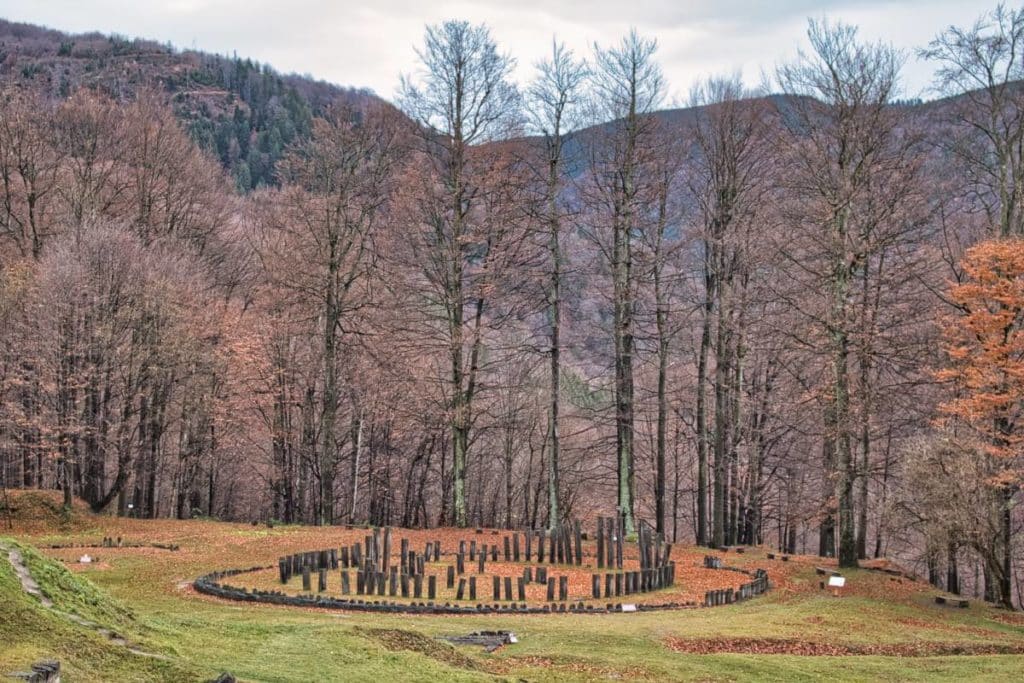
On foot through the capital of the Dacians
Upon entering, it becomes obvious: this is more than just a pile of stones. The plan shows a complete city – with temples, streets and defenses. I am surprised. When I think of ancient cultures, only the Greeks and Romans come to mind. But there were other cultures that were more developed than we think today. Sarmizegetusa Regia got importance when Burebista, the king of the Dacians made it the capital of Dacia around 50 BC.
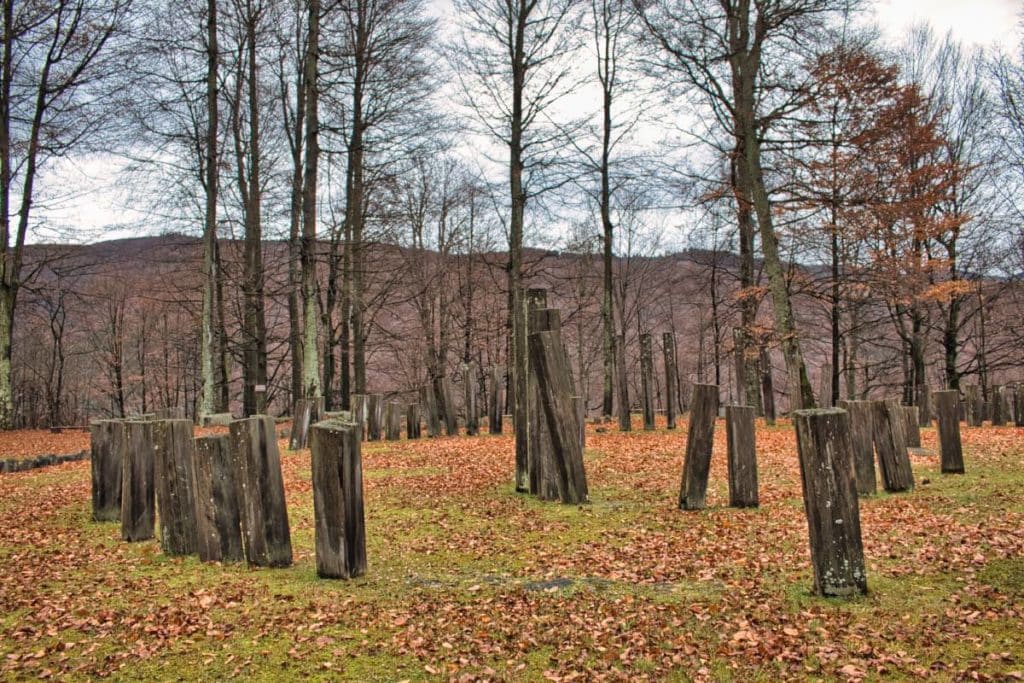
The city remained so for at least a century and a half. Under King Decebalus the city was massively expanded. On the display boards, which are placed everywhere in Sarmizegetusa Regia, you can see how far this Stonehenge of the Dacians was also developed as a city. Thus, during excavations, archaeologists found, besides a medicine chest, vases with insignia and various tools and weapons made of metals. On foot we walk along paved road in ancient times to the temple complexes.

Romanian Stonehenge as the most sacred place of the Dacian religion
From the foot of the road you have a beautiful view over the circular temple complexes, which in fact form a Romanian Stonehenge. Here people paid tribute to the Dacian god Zalmoxis. The high priest of this period played an important role in the society of Dacia. Sarmizegetusa Regia also gave the clues that, contrary to what was first assumed, the king was not himself the highest priest, but both performed their roles in society side by side. In the center of the temple complexes, wooden poles rise up into the air – they are said to have been a kind of solar calendar. Next to them there are other temple complexes made of stone – researchers suspect that these were used for offerings – perhaps even for human sacrifices.
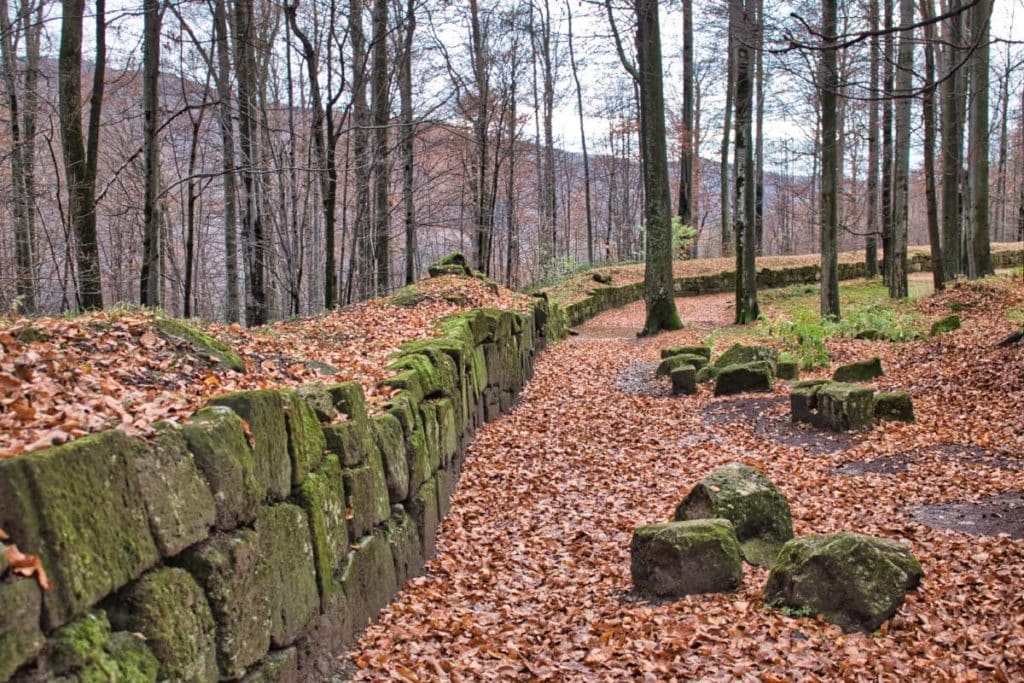
The tragic end of the Dacian culture and why there are two Sarmizegetusa
However, the advanced civilization of the Dacians came to an abrupt end with the expansionism of the Romans, which also extended to present-day Romania. Under Emperor Traian, the Romans subjugated the Dacians in 106 AD and destroyed Sarmizegetusa Regia. The walls were demolished. However, the Dacians rebuilt the walls in an act of resistance. The Romans then destroyed them again and deported the inhabitants of Sarmizegetusa Regia.

Decebalus, the king under whom Sarmizegetusa Regia had developed so magnificently, killed himself in the face of defeat. The Romans, on the other hand, having now completely subjugated the Dacians, built a new Roman-type city 40 kilometers to the west and named it after the ancient city of Ulpia Traiana Sarmizegetusa. Because these ruins had already been found in the 19th century, they were initially also thought to be the capital of the Dacians, until they came across the Romanian Stonehenge.
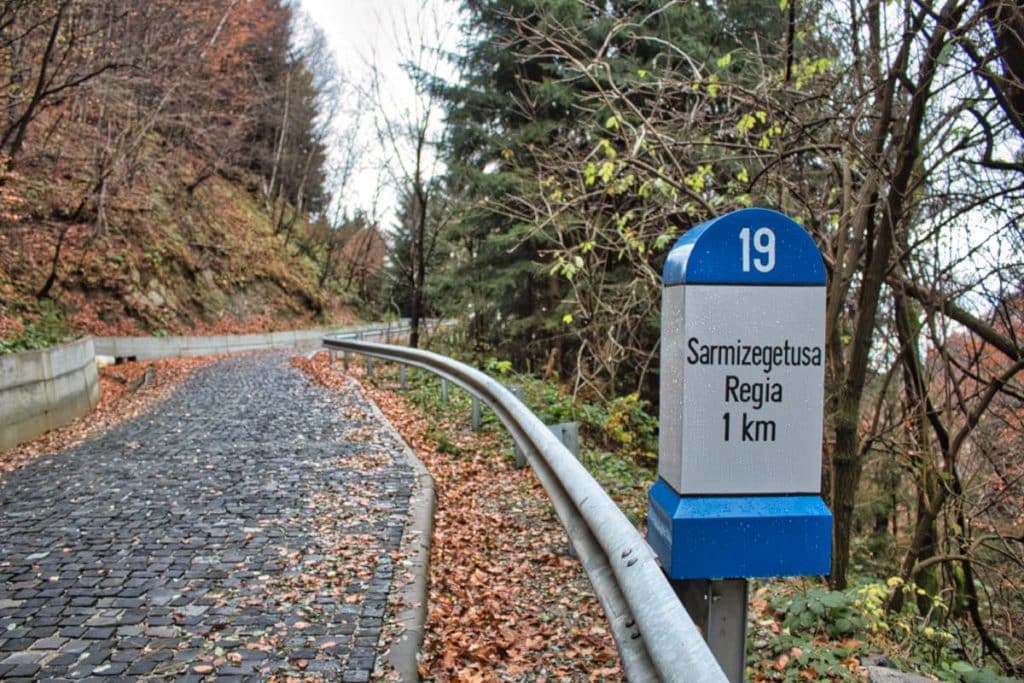
Travel tips for Sarmizegetusa Regia
Getting to Sarmizegetusa Regia
To get to Sarmizegetusa Regia, you really have to go by car or on foot. To my knowledge, there are no buses. Also I have seen no tour offers for excursions. Please make sure that you do not go to the wrong Sarmizegetusa! The correct address of Sarmizegetusa Regia I have linked out here in Google Maps for you!
In summer it might be possible to hitchhike to the Romanian Stonehenge. However, when I was there in November, we were the only visitors to Sarmizegetusa Regia. The parking lot is the end of the road through the valley. Thus, only staff and foresters go there. I therefore recommend taking a rental car. Tour offers to get there I have not seen.
Admission and opening hours Sarmizegetusa Regia
The entrance to the site is possible all year round. However, the opening hours of Sarmizegetusa Regia are seasonal. You can visit the excavation site at the following times:
- From May 1 to September 30, it is open from 9 am to 8 pm.
- Open from 9 a.m. to 6 p.m. from March 1 to April 30 and from Oct. 1 to Nov. 30.
- From Dec. 1 through Feb. 28 or 29, it will be open from 10 a.m. to 3 p.m.
Admission costs 5 lei regular, concessions pay 2 lei. Caution. Also in Sarmizegetusa Regia photographing costs extra (10 lei)!
Accommodation
There are no accommodation options directly near Sarmizegetusa Regia. The nearest guesthouse is in Cotesti. You will also pass this place on the way to the excavation site. The area is very pristine and well suited for hiking. If you prefer more action, you should stay in Hateg or Hunedoara. There are more sights nearby. Hotels can be booked via Booking.com, for example, and private accommodation is best found via a vacation home provider.
Highlights around Sarmizegetusa Regia
- Hunedoara Castle is one of the most beautiful knight castles in the world, in my opinion.
- The citadel of Alba Iulia is not far.
- The Roman church of Densus is an hour away by car. I would have liked to visit it.
- Transylvania with the cities of Sibiu, Sighisoara and Brasov is worth a visit.
- Cluj-Napoca and the salt mine Turda should be seen.


